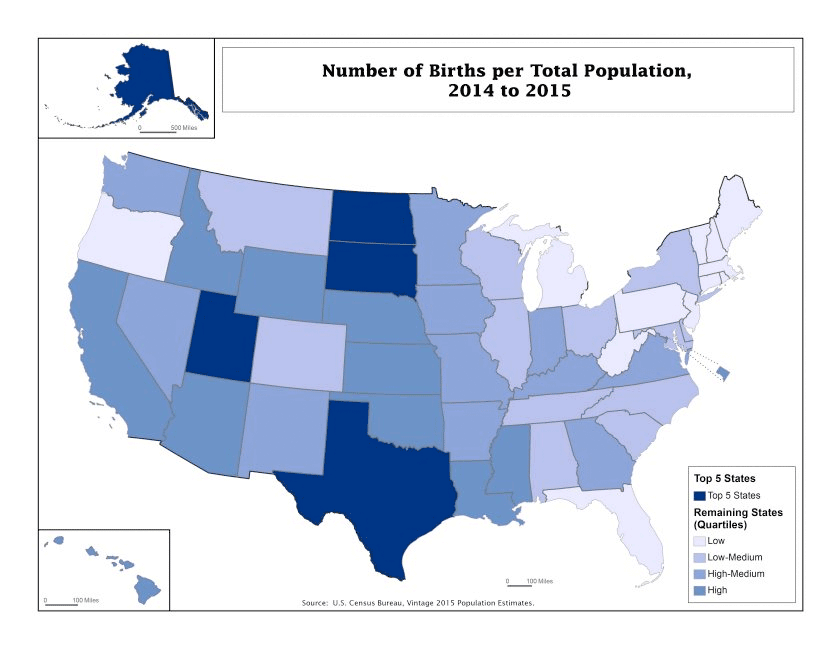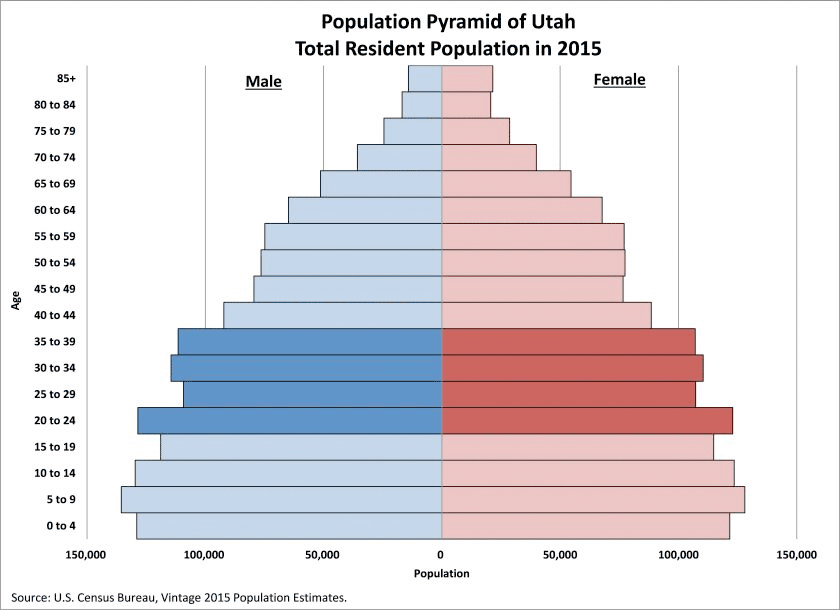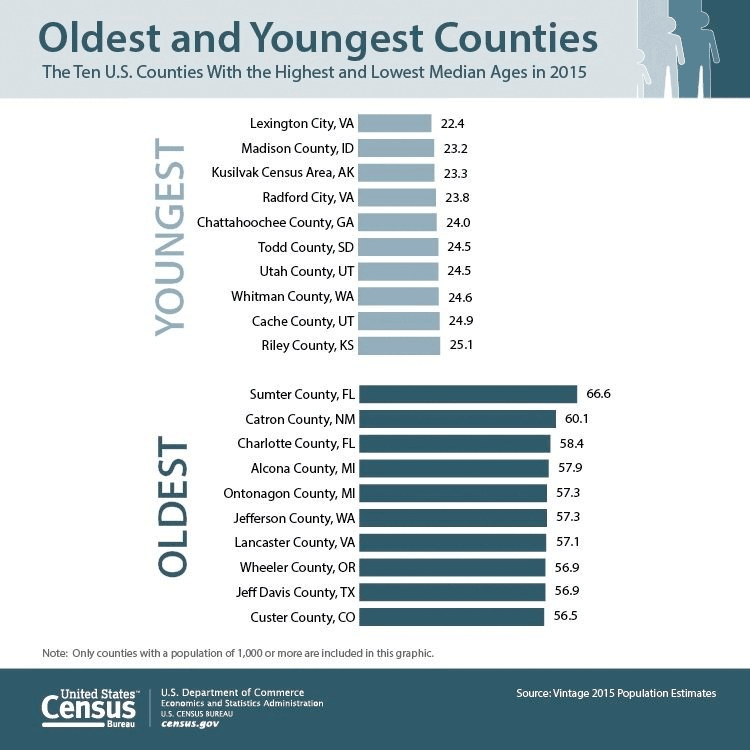Where The Babies Are Booming
February 10, 2018
One more birth means one more person. Therefore, that births would be one of the primary drivers of U.S. population growth seems to be a deceptively simple conclusion. However, why, how, and where births contribute to the U.S. population growth varies from state to state.
There were almost 4 million births between July 1, 2014, and June 30, 2015, according to U.S. Census Bureau population estimates. The map below shows how many births there were in each state relative to their total population. The top five states were: Utah, Alaska, North Dakota, Texas and South Dakota. While those states account for only 10 percent of the nation’s population, 12 percent of the births occurred there.
Births per Total Population 2014 to 2015

The Young Make More Babies
A younger population usually means proportionally more births. According to the National Center for Health Statistics, in 2014 women in their twenties gave birth to almost 20 percent more children than women in their 30s, 40s and 50s combined. Utah has the lowest median age of all the states (30.7) and, with the exception of South Dakota, our top five high-birth states are also among the top five youngest. The District of Columbia had the third-lowest median age of 33.8 and was just behind South Dakota with the sixth-highest number of births relative to population.
The age pyramid below shows how large Utah’s 20-29 age group is. To learn more about age pyramids and how they’re used, check out this blog.

Four of the top 10 youngest counties in the United States are in the top five birth states (Kusilvak census area in Alaska, Todd County and Clay County in South Dakota, and Utah County and Cache County in Utah). Utah County stands out because it has both a large population of more than half a million and a high ratio of births to population, ranking fourth on the list of counties with more than 50,000 people. The second-youngest county in the nation, Madison County, Idaho, had the highest number of births relative to the total population. Alaska’s Kusilvak census area came second.

States can be young because of births, migration, or immigration. In the case of North Dakota, an influx of young people from other parts of the U.S. contributed to growth. North Dakota’s oil boom has attracted young workers for several years. Just between 2014 and 2015, the state had 12,000 more people coming in than leaving. North Dakota was the only state that saw its median age decline between 2014 and 2015 (34.9 to 34.6).
IT’S NOT JUST ABOUT AGE
But age is not the only factor that influences the birth rate. Racial and ethnic diversity can also play a role. In 2014, blacks and Asians gave birth to almost 17 percent more children than the national average, according to the National Center for Health Statistics. Hispanics gave birth to 32 percent more than the national average. Texas, which ranks in the top four in births relative to total population, has a much higher proportion of Hispanics than other states. Below is the racial and ethnic makeup of Texas, where groups are broken into non-Hispanic white, non-Hispanic black, non-Hispanic Asian, and non-Hispanic other (non-Hispanic American Indian or Alaska Native, non-Hispanic Native Hawaiian or Pacific Islander, and non-Hispanic multiple race). In Texas, almost 40 percent of the state’s population was Hispanic in 2015.

Just as birth rates differ from state to state, they also differ from county to county within a state. While high birth rates tend to come from large urban counties, in states such as Texas, birth rates are high in both rural and urban centers. High rates are likely due to the large Hispanic population in nearly all counties. Starr County, northeast of the Mexican border, has a total population of about 63,000 but had the highest ratio of births among Texas counties with more than 50,000 people and ranked third-highest in the nation. It also had the highest percentage of Hispanics of any county in the U.S. (95.8 percent).
So why do some states have more births than others? The states at the top of the list have some things in common. They either already have or are attracting younger people or are attracting an ethnically or racially diverse population. Utah and Texas, two of the top five birth states, exemplify both trends.
C Peter Borsella and Luke T. Rogers are demographers in the Census Bureau’s Population Division.






























